|
Sky Blink
What would cause the sky to suddenly flash brightly for a
moment and then fade again? Lightning storms can do this, but if
there are no storms about, clear skies, then what on Earth
happened? More and more people are noticing these instances and
they are indeed related to Nibiru’s approach. Six years ago in
2019 Russian Lomonosov satellites
noted explosions on the outer edge of the upper atmosphere. Red
Sprites and Blue Jets are known to dance there, but are always
associated with lightning and atmospheric turmoil below. But the
Lomonosov explosions were not associated with either lightning
or storms.
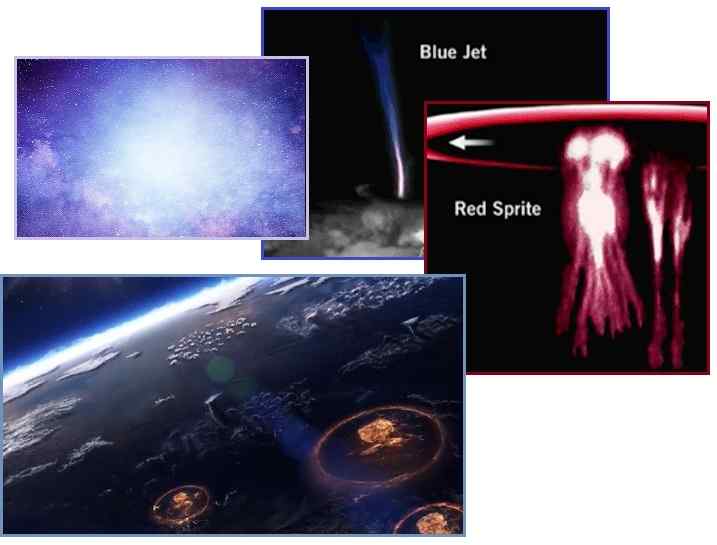
ZetaTalk Confirmation 2/28/2019: What
is causing the Lomonosov explosions? Where Blue Jets and Red
Sprites are associated with lower atmosphere weather, there is
no such atmospheric turmoil for the Lomonosov explosions. We
have detailed that lightning will
pass from the Earth to Nibiru during the passage,
causing what the ancients called the Thunderbolts
of the Gods, trumpeting due to splits in the upper
atmosphere clapping back together. These phenomena do not just
suddenly emerge one day, but manifest gradually. We predicted
last December that the Thunderbolt
trumpets would soon manifest, after Neutron bursts were
recorded over Russia’s Barentsburg Arctic station.
How disruptive will this upper
atmosphere lightning become? Caused by friction with the
charged tail of Nibiru, this will only steadily increase.
Modern man has become utterly reliant on their satellites,
central to their GPS navigation systems, telecommunications,
and Internet traffic. All manner of monitoring of the
environment is done, from solar emissions to weather trends.
Mankind’s electronics will of necessity shrink toward Earth’s
surface, where they can be better protected from Nibiru’s
reach.
The approach of Nibiru also brings more and more Petrol to the
Earth, creating Sky Fire in the lower atmosphere. Now with
flashes of light, we are having Petrol bursting into a burn in
the upper atmosphere. Petrol burning on the upper atmosphere
will only increase as it did on May
17, 2024 for a startled fisherman and recently on March
30, 2025. A flash of light, then blinking back to normal
sky. This is not a glitch in the matrix, it’s just Nibiru in the
neighborhood.
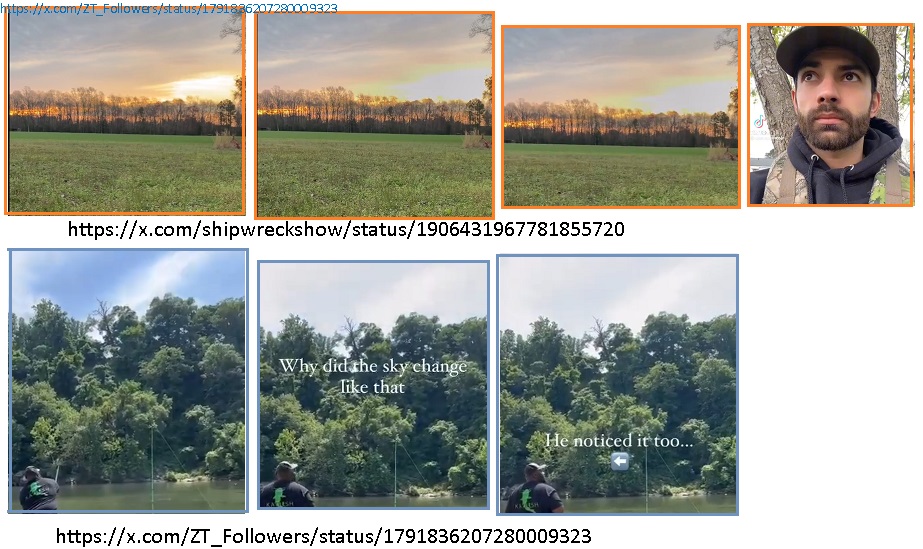
ZetaTalk Confirmation
4/1/2025: What
is causing the sky to blink? This has been captured on video
within the past year or so, but more often noticed by startled
people who fail to capture the phenomena as it is so fast and
fleeting. Lomonosov explosions
occur when Petrol bursts into flame upon touching the upper
atmosphere. Lomonosov explosions are sighted by satellites,
but burn so quickly there is nothing left to see in the lower
atmosphere. But given the amount of petrol now being wafted to
Earth, there is not sufficient oxygen to consume the Petrol,
so these flashes are occurring where they are visible to man.
This process will accelerate and force the reality of Nibiru
into media discussion.
New Madrid Nexus
The New Madrid Rupture is poised to happen. On April 2 all
signs point to this. The Void in the N Atlantic is diverting the
Gulf Stream due to the heat from exposed magma. The splitting
Atlantic is likewise creating Iceland quake swarms. The SE
Portion appears to have finally pulled its toe away from the
Isthmus, causing drooping land
pulled taut in the Gulf of America. Drooping land causes low air
pressure that simulates a thunderstorm.
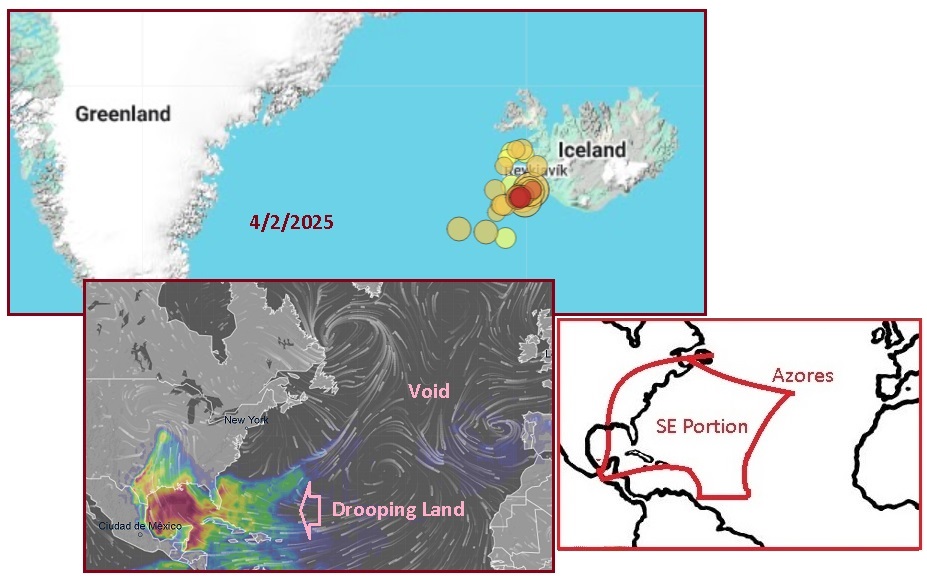
ZetaTalk Confirmation 6/1/2024: Why
has the US Military been sending their planes aloft to surveil
the US Homeland from dawn until early afternoon? This has been
noted by the ZetaTalk Team for the past couple weeks and
parallels the development of drooping land to the West of the
Mississippi River. Sudden drooping can be seen on the air
pressure maps as regions with Thunderstorm potential, ie red.
The drooping causes low air pressure there, so high air
pressure rushes in. As the New Madrid Portions pull apart,
drooping land develops to the West of the Mississippi.
A similar “storm” over the US is centered over the town of New
Madrid, the heart of the New Madrid Fault Line. The tearing New
Madrid Fault Line allows land to the west of the fault to drop,
as its attachment to the land in the SE Portion is freed. This
is shown on the Methane Map as well as the electronic screech in
the rock on the GeoElectric map. Thus US Military Planes are
swarming this region to the west of the Mississippi River as
well as surveilling the East Coast for signs of tsunami.

ZetaTalk Prediction 8/16/2006: What
does this do to the N. American plate? It pulls it at a
diagonal, ripping the rock fingers along the New Madrid fault
such that the land to the East of the Mississippi moves up and
to the East, toward New England, and the land to the West of
the Mississippi moves down and to the West. This does more
than tear most of the bridges along the Mississippi.
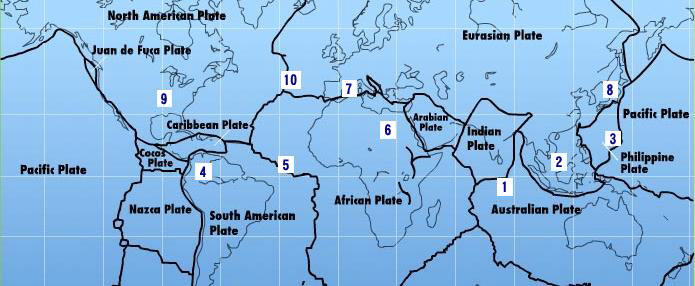
ZetaTalk Prediction
10/16/2010: The
7 of 10 scenarios describe plate movements, and for this to
occur something has to release the deadlock, the current
stalemate where the plates are locked against each other. Once
the deadlock is broken and the plates start moving, sliding
past each other, new points where the plates are locked
against each other develop, but these are weaker locks than
the one at present. The current lock, as we have so often
stated, is the Indo-Australian Plate which is being driven
under the Himalayans. This is no small lock, as the height of
the Himalayans attests. Nevertheless, the activity in this
region shows this likely to be the first of the 7 of 10
scenarios to manifest. Bangladesh is sinking and the Coral Sea
is rising, showing the overall tipping of the Indo-Australian
Plate. Now Pakistan is sinking and not draining its floods as
it should, while Jakarta on the tongue of Indonesia is also
sinking rapidly, showing that the tilt that will allow
Indonesia to sink has already started.
Now the Sunda Plates snap-off seems to have happened,
reminiscent of the 5 Day Runs the
2023 Crop Circle designs predicted. The 5 Day Run scenario has
been anticipated since the Crop Circle designs were laid in
2023, but none so far have resulted in the New Madrid Rupture.
But we appear to be coming closer.
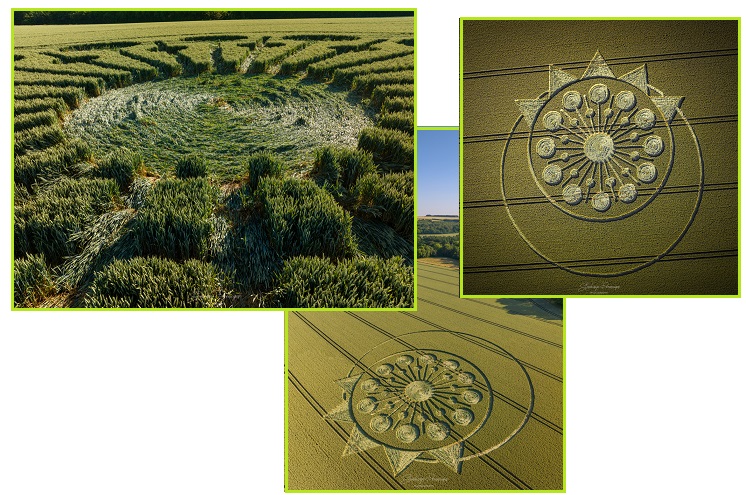
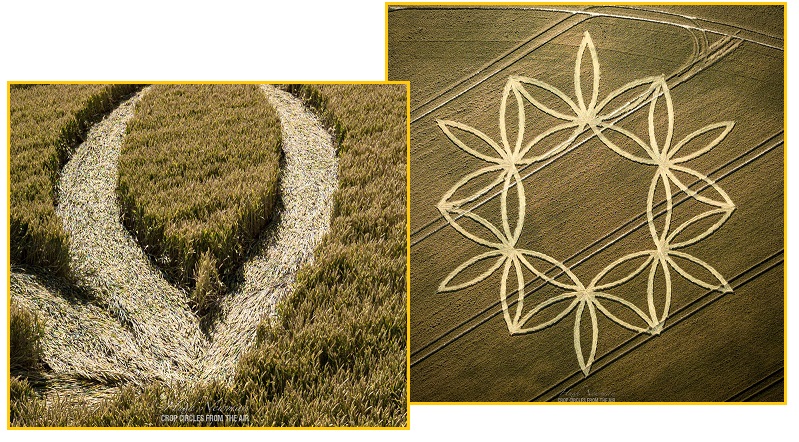
- Beijing Blowout
9/3/2023
https://zetatalk.com/newsletr/issue886.htm
- Among the signs to watch for,
there were Crop Circle warnings - the 5 Days and the Daisy
Chain designs. So we are watching for a big blowout at the
Triangle to result in a European tsunami within 5 days,
but in the meantime there would be lots of practice runs.
Of course, there would be no date hints because the
Council of worlds is in charge and they change their minds
frequently. They also forbid the Zetas from predicting
dates.
- 5 Day Runs
9/29/2024
https://www.zetatalk.com/newsletr/issue942.htm
- One such run occurred on
7/4/2023. Now on 9/13 another 5 resulted in the big China
Blowout and N Atlantic Rupture. But the sequence was
closely watched and resulted in confusion. How does one
say a 5 Day Run is in process without alarming the public?
ZetaTalk Confirmation
6/26/2023: This
pointed Crop Circle design is giving a timeline for a major
Severe Wobble episode, which has been predicted by ourselves
months ago. This would involve a Polar Push such that the
Magnetic N Pole of Earth would be pushed away and not allowed
to Bounce Back on a daily basis – represented by the lopsided
circle central to the design. The 5 spikes represent days, a
time period between the Sunda Plate snap and China lunge into
the Pacific until the SE Portion of N America ruptures along
the New Madrid Fault Line. The clock or calendar, a timeline,
is included to indicate this design is a timeline.
On March 28 a Magnitude 7.7 struck Myanmar, causing buoys from
Australia and beyond to go into event mode and felt in China.
This was the Sunda Plate snap, and will likely expedite the
completion of the 7 of 10 Plate Movements.

- Powerful Magnitude 7.7 Earthquake
Rocks Central Myanmar
https://7news.com.au/news/powerful-magnitude-77-earthquake-rocks-central-myanmar
- The shaking was felt across
surrounding regions. A powerful magnitude 7.7 earthquake
has struck central Myanmar with a depth of 10km, according
to the United States Geological Survey (USGS). The quake
was recorded at 5.20 AEDT and was felt across the
surrounding region. Some people in China’s Yunnan
Province, which borders Myanmar, also took to social
media saying they felt the earthquake.

ZetaTalk Confirmation
3/31/2025: There
is a relationship between the Sunda Plate snapping off and a
China blowout into the Pacific and the New Madrid Rupture. Such
action in China and Asia would force the Pacific Plates to
overlap and compress, encouraging the Mainland of N America to
slide into any void created thus triggering the New Madrid
Rupture. In 2023 the 5 Day Crop
Circle designs pointed to a sequence of events triggered
by a Sunda Plate snap. No date was given. But despite being
closely watched no Sunda Plate snap qualified.
At present the New Madrid
Rupture is over ready, with the unzipping of the Fault Line
running up to the final stretch under the Seaway, as Methane
maps and a clapping Atlantic Void show. Increased quakes in the
Mainland show that the Mainland is sliding to the SW. A trigger
event such as a Sunda Plate snapoff and a China blowout into the
Pacific could trigger the New Madrid Finale, as the 5 Day crop
circle prediction forecast. In this scenario the Sunda snap is
followed by action in the S Pacific and S Atlantic and thence to
the SE Portion. As always, the Council of Worlds is in charge.
If the Magnitude 7.7 quake at Myanmar on March 28 was the start of
a 5 Day Run, then it should have arrived at the Void to
potentially cause a rebound wave toward Europe by April 3, and it
did! Crop Circle predictions showing validity!

Making Clothing
In the modern world when one needs clothing
or blankets it is a simple matter of a shopping trip. But
during the Pole Shift disaster predicted in a few short years,
shopping and distribution of goods will not be possible for
most. Eventually, even flea markets or barter exchange in
neighborhoods will run out of goods. What then? It is just a
matter of stepping back in time for
a couple hundred years, as during the time prior to the
Industrial Revolution, or living like the Amish do today.

Using a Spinning Wheel
and Loom to make cloth is a hobby these days, but with hand
tools these can be replicated anywhere. With wool or cotton,
card it into long fibers. Spinning a thread, a rope, or a strand
of yarn involves three steps - straightening the material to be
spun, putting a twist in a thin strand of the material, and
winding the twisted strand onto a bobbin. Material to be spun
can be any fibrous material such as wool from animals, flax and
cotton from plants, or silk from silk worms.

Preparing the material involves washing it, and in the case of
flax, soaking and working it in water to remove rotting soft
matter from the fibers. The clean fibers are then combed
straight or carded, an action where the fibers are caught
between two flat wire brushes, called cards, pulled in opposite
directions. In the most primitive form spinning is done with a
distaff and spindle, where the hand-held spindle is moved in a
circle by wrist movements and after a twist is put into the
thread, is wound by hand onto the spindle. This process is used
in one form or another in primitive cultures around the world.

The spinning wheel improves this process, allowing a foot pedal
to create the spin while the hands are free to work with the
material. The foot pedal is attached by a strap to a special
spoke sticking out from the center and to the side of the wheel.
When this special spoke is on the downward side of the circle,
the foot gives a gentle nudge to the foot pedal, encouraging the
motion. When on the upward side of the circle, the foot
releases, allowing the pedal to raise up so as not to slow the
motion of the wheel.
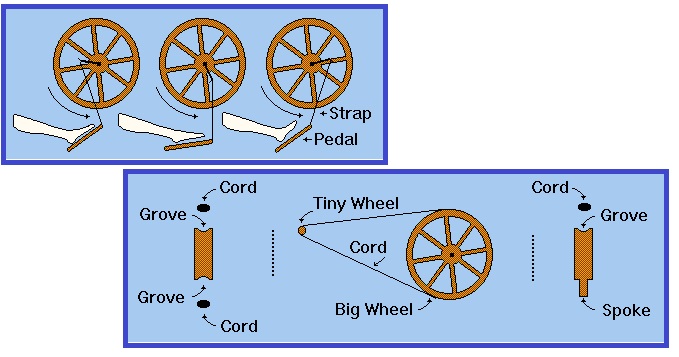
There is a groove in the wheel that holds a cord, and a similar
groove in a tiny wheel on the other end of the Spinning Wheel.
The relatively slow motion of the large wheel thus makes for
many turns of the tiny wheel, which is attached to the bobbin.
This bobbin replaces the more primitive spindle. Enough tension
is placed on the cord wrapped around the wheel and thence to the
bobbin so that the cord does not readily slip on either the
wheel or the bobbin. The knot in the cord should be as smooth as
possible.

A portion of the clean and straightened fibers are hooked onto
the pointed end of the bobbin, and the turning motion begun. The
material is first drawn out gradually to a thin thread while
attached to the end of the bobbin. The spinning wheel now is
giving a twist to the thread. The drawing out of the material
should occur simultaneously to the twisting, so that the twist
climbs back toward the receding hand. When the material is
twisted to an arm's length, the thread is allowed to wind up
along the length of the bobbin, coming back to the tip for the
next thinning and twisting action. During twisting, a slight
tension holds the thread back from winding on the bobbin.

Cotton or wool fibers can also be used as yarn for knitting or
crocheting. Since wool tightens and shrinks when heated, a type
of cloth called felt can be made from small scraps. The felting
process is to lay wool fibers in different directions, then pour
boiling water over the lot. Felt is durable and wet felt can be
formed into slippers. Transforming natural materials into
clothing in this way has been done by idle hands in the evenings
around the fire for centuries.
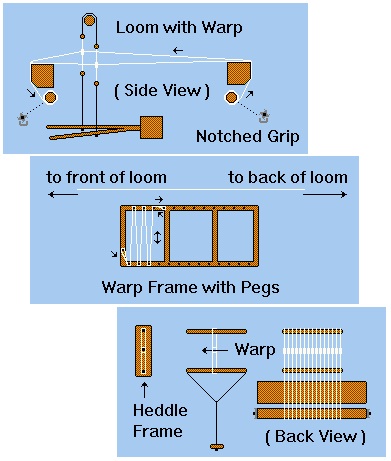
Once you have thread and yarn, you can weave cloth on a loom.
Looms can be large or small, producing heavy cloth or something
lightweight like linen. Once again, this is an item a carpenter
could construct with hand tools. Weaving requires two different
threads - the warp and the weft. The warp is long and strung
from the front to the back of the loom; the weft is laid from
side to side during the weaving process. Looms can be large,
several feet wide, or small enough to be placed on a table.
Cloth woven on a small loom can be sewn together to make a
larger piece.

The warp is long, runs from the front of the loom to the back,
and is wound around horizontal wooden bars at the front and
back. These bars turn, to wind the warp at the front end or
unwind the warp at the back, by using a simple notched grip
attached to the ends of the bars. The warp is strung by winding
a continuous thread around pegs on a warp frame. Wind the thread
back and forth several times, creating several warp threads at
one time, and then grip the bunch on both ends and transfer the
warp lengths to the loom frame. This is done repeatedly until
the warp is as wide as the loom or as wide as desired.

Make the warp as long as possible, as the very front and back of
the warp can never be woven and become waste or fringe. The warp
threads on the loom are threaded through heddles, which are also
made of string or thread. A heddle is in essence a small string
loop inside a larger string loop, with the small loop in the
middle to hold a warp thread so it can be raised or lowered
during the weaving process. The heddles are made on a heddle
frame composed of three nails on a board, the top loop tied
above the middle nail, then below the middle nail, then below
the bottom nail.

The warp threads are strung through the heddles in the two
heddle racks so that the odd warp threads go through the heddles
on one rack, and the even warp threads go through the heddles on
the second rack. Then, by pressing one tread or the other, the
warp threads are raised and lowered by a pulley action, creating
a crisscross that secures the weft threads passed back and forth
across the warp. The weft threads are wound onto a bobbin, a
metal rod, that is passed back and forth across the warp threads
inside a shuttle, as though they were sailing across the warp
threads inside a tiny boat. The shuttle is a size that can be
held in the hand, longer than wide, and the wood is smoothed to
avoid snagging during the weaving process. The shuttle has a
rectangle cut from the center where the filled bobbin is placed.
The metal rod of the bobbin is held in place by notches at the
ends of this hole. A slit is cut at the side where the weft
threads unwind.

After the shuttle is passed and the weft thread pulled so there
is no slack, the beater bar is pulled forward to tap the weft
snug against the crisscross of the warp threads. Then the beater
bar is dropped back, away from the weaver, and the warp threads
reversed by the heddle pulley action controlled by the foot
treads. The beater bar has a thin wire or reed to go between
each warp thread, and is not used with force but a gentle
tapping action. Different patterns can be woven into the
material by alternating colors in the warp thread and using a
number of shuttles.

Curing leather to be used in coats or shoes or chaps is messy at
first, because the leather must be scraped clean. There are many
chemicals used for curing leather, but one survivors are almost
certain to be able to obtain is the time honored tannin from the
bark of many different trees. Some rivers even owe their dark
brown color not to mud but tannin from trees upstream. Soaking
the leather in a mash from the brains of the animal is another
tanning technique.
There is helpful information on the Troubled
Times pages to soften and cure hides, such as Rawhide,
Scraping, Dry
Scraping, Wet Scraping,
How Much, Brain
Tanning, Braining Steps,
Soap Tanning, Smoking,
Softening, Inuit
Women, and Bird Skins.
|

